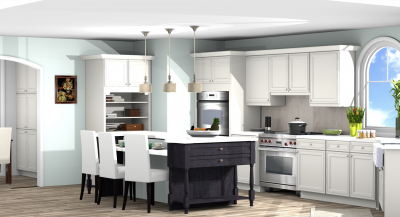Another justification for the pattern back to open kitchens (and an establishment of the “kitchen object” reasoning) changes in how food is readied. Though preceding the 1950s most Kitchens Norwich cooking began with crude fixings and a feast must be set up without any preparation, the coming of frozen suppers and pre-arranged accommodation food changed the cooking propensities for some individuals, who subsequently utilized the kitchen less and less. For other people, who followed the “cooking as a social demonstration” pattern, the open kitchen enjoyed the benefit that they could be with their visitors while cooking, and for the “imaginative cooks,” it may even turn into a phase for their cooking execution The Frankfurt Kitchen of 1926 was made of a few materials relying upon the application.
Advanced kitchen appliances :
The advanced implicit kitchens of today use molecule sheets or MDF, embellished with an assortment of materials and completes the process of including wood facade, enamel, glass, melamine, overlay, fired, and eco gleam. There are many kitchen installers in Norwich who provide many services like installing new kitchens or repairing the old kitchens at an affordable range. Not very many makers produce home inherent kitchens from treated steel. Until the 1950s, steel kitchens were utilized by engineers, however, this material was dislodged by the less expensive molecule load-up boards at times embellished with a steel surface.
- Homegrown kitchen arranging
- Beecher’s “model kitchen” carried early ergonomic standards to the home
- Food in a kitchen storeroom
Square Kitchen :

Homegrown (or private) kitchen configuration is a moderately late control. The main plans to advance the work in the kitchen return to Catharine Beecher’s A Treatise on Domestic Economy (1843, updated and republished along with her sister Harriet Beecher Stowe as The American Woman’s Home in 1869). Beecher’s “model kitchen” engendered interestingly a deliberate plan dependent on early ergonomics. The plan included customary racks on the dividers, plentiful workspace, and committed stockpiling zones for different food things. Beecher even isolated the elements of planning food and preparing it by and large by moving the oven into a compartment contiguous to the kitchen.
New Household Management:
Christine Frederick distributed from 1913 a progression of articles on “New Household Management” in which she investigated the kitchen following Taylorist standards of proficiency, introduced point by point time-movement contemplates and got a kitchen plan from them.
Her thoughts were taken up during the 1920s by planners in Germany and Austria, most prominently Bruno Taut, Erna Meyer, Margarete Schütte-Lihotzky, and Benita Otte, who planned the primary fitted kitchen for the Haus am Horn, which was finished in 1923.[8] Similar plan standards were utilized by Schütte-Lihotzky for her popular Frankfurt kitchen, intended for Ernst May’s Römerstadt, a social lodging project in Frankfurt in 1927. While this “work kitchen” and variations got from it were an extraordinary accomplishment for apartment structures, property holders had various requests and didn’t have any desire to be compelled by a 6.4-square-meter (69 sq ft) kitchen. By and by, kitchen configuration was generally impromptu after the impulses of the modeller. It was there that the thought of the kitchen work triangle was formalized.

